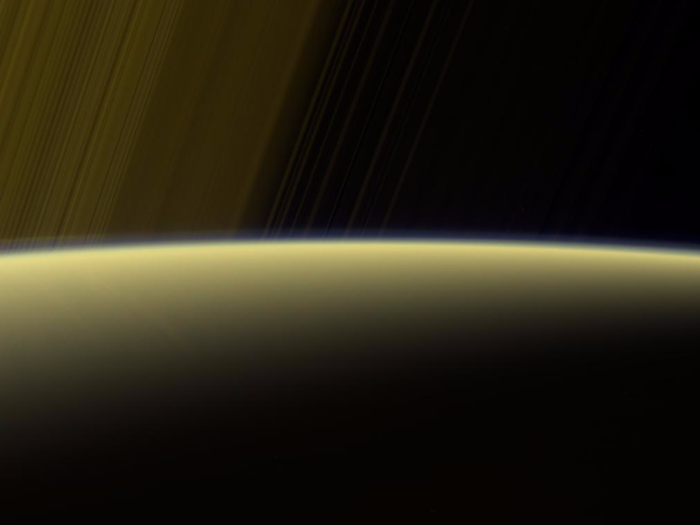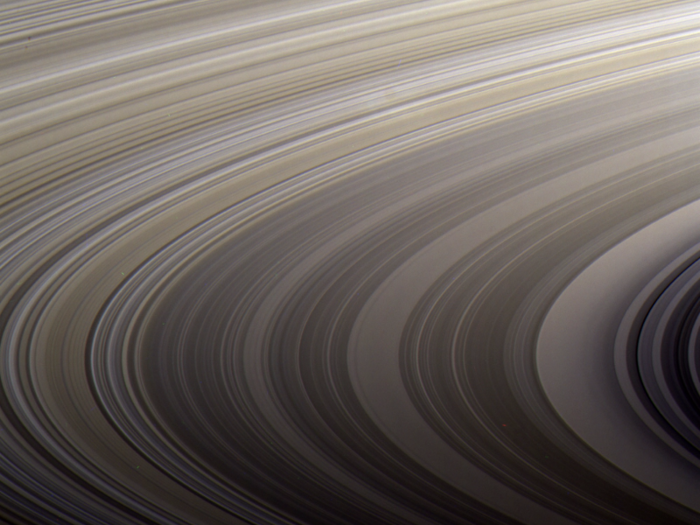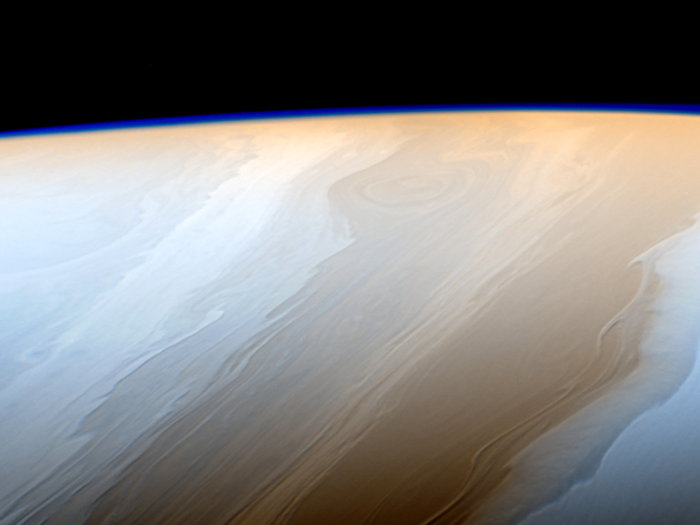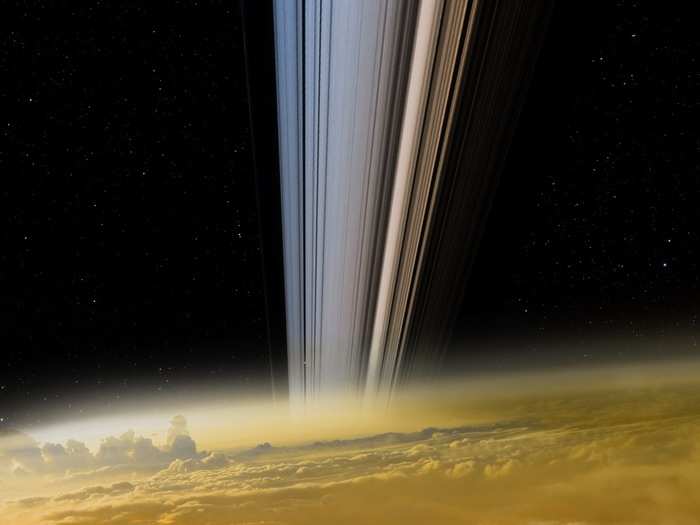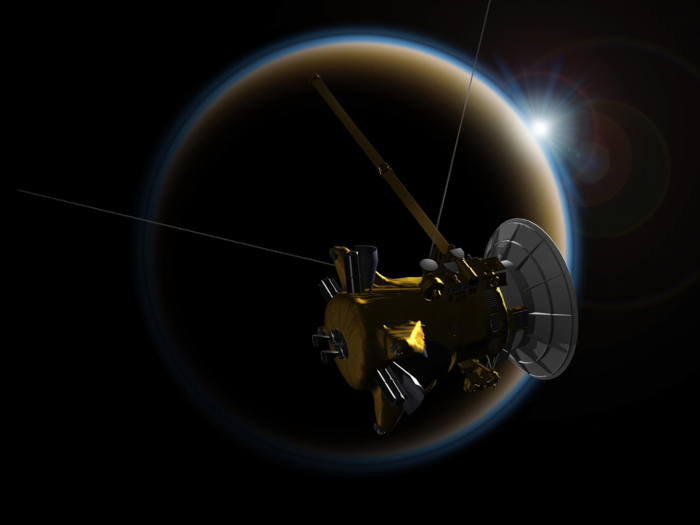On its last dives through the rings, Cassini will also able to analyze samples of Saturn's rings on its last dives. That will help scientists figure out how dense they are and better understand what they're made of.
In the image above, the light of a new day on Saturn illuminates the planet’s wavy cloud patterns and the smooth arcs of its vast rings. This view looks toward the sunlit side of the rings from about 10 degrees above their plane.
On its next dip into Saturn's atmosphere on August 20, Cassini may be able to go even deeper. It could see the planet's northern aurora and measure the temperature of its southern polar vortex.
To capture the image above, Cassini gazed toward the rings beyond Saturn's sunlit horizon. Along the limb (the planet's edge) at left can be seen a thin, detached haze. This haze vanishes toward the right side of the scene.
Before getting to the Grand Finale stage, Cassini was able to capture this view of Saturn's moon Prometheus inside Saturn's F ring.
Many of the narrow F ring's faint and wispy features result from its gravitational interactions with Prometheus, which is 53 miles (86 kilometers) across.
NASA hopes this closest-ever brush with Saturn will reveal new components of its atmosphere, which is believed to be about 75% hydrogen, with most of the rest being helium.
The clouds on Saturn look like strokes from a cosmic brush because of the wavy way that fluids interact in Saturn's atmosphere.


